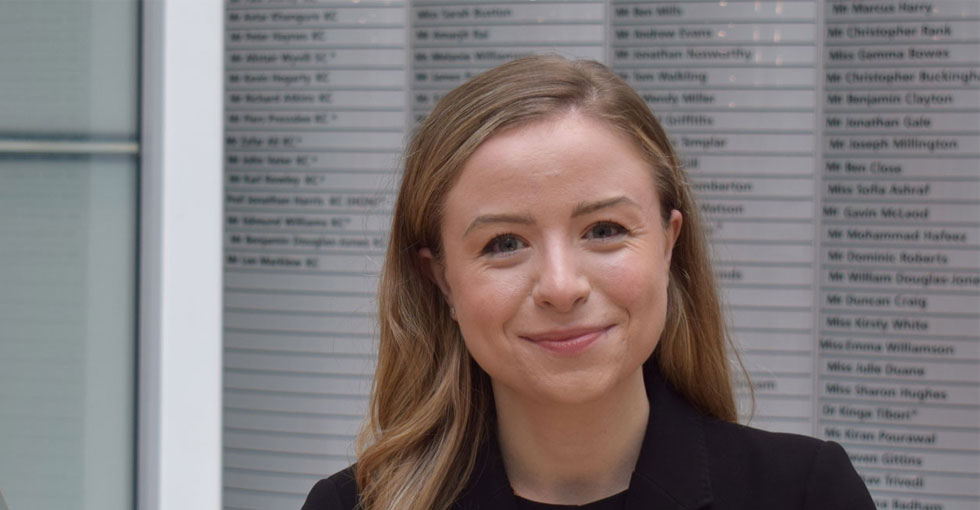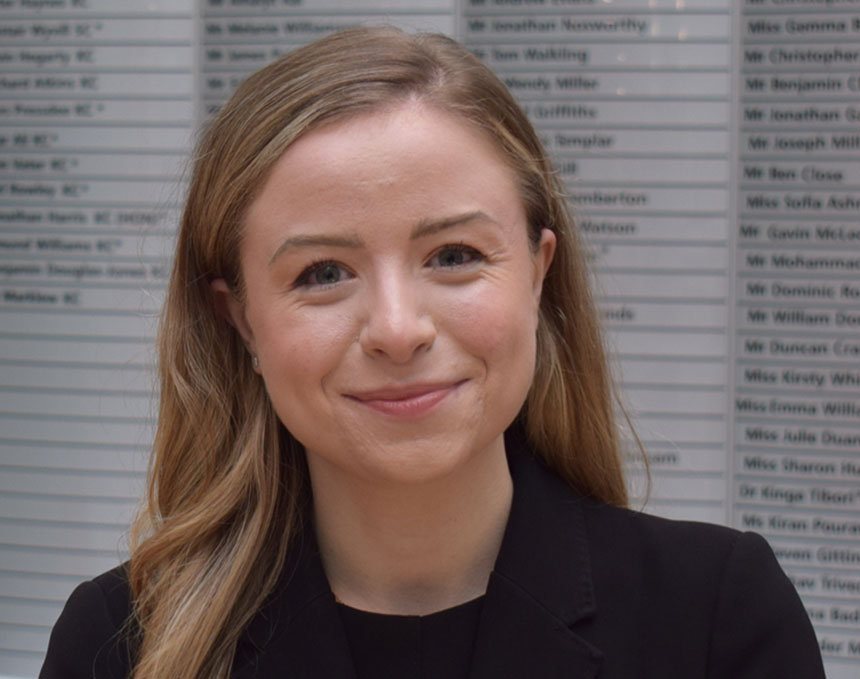In a detailed exploration of recent High Court decisions, Eloise Marriott examines the critical question: can an express declaration of trust be overridden by an informal agreement? Traditionally, express declarations were seen as conclusive regarding the beneficial ownership of property, but new judgments, such as Re Iqbal and Nilsson v Cynberg, present conflicting views on whether informal agreements can vary these declarations.
This article discusses the implications of these decisions for property practitioners and the possible future direction of the courts. It highlights key cases and provides practical insights into handling disputes on property ownership.
Introduction
- For most property practitioners, when faced with a dispute in relation to the beneficial ownership of a property, the starting point will be to consider whether an express declaration of trust has been entered. In many cases there will be an express declaration of trust, set out within the Land Registry TR1 form on the transfer of the property.
- An express declaration is often presumed to provide the final word on the beneficial ownership of a property. The conclusive nature of an express declaration of trust is however subject to some exceptions, including fraud and rescission. In the leading decision of Stack v Dowden [2007] UKHL 17, at paragraph 49 of the judgment Baroness Hale further added:
No one now doubts that such an express declaration of trust is conclusive unless varied by subsequent agreement or affected by proprietary estoppel…
- What Baroness Hale did not set out within Stack v Dowden was whether such subsequent agreements, were limited to formal agreements or whether the same could include an informal agreement. Of course, this question has significant importance. If an express declaration of trust can be superseded by an informal agreement, there are likely to be far more circumstances that fall within the exception to the general rule.
- This year, two High Court decisions sought to answer this question. Both decisions arose from a dispute by the trustees in bankruptcy as to the interest held by the bankrupt in a co-owned property:
- Re Iqbal [2024] EWHC 49 (Ch), handed down in January 2024, determined that any subsequent agreement must comply with the formality requirements of the Law of Property (Miscellaneous Provisions) Act 1989 (“the LP(MP)A”); and
- More recently in August 2024, Nilsson v Cynberg [2024] EWHC 2164 (Ch), concluded that such formality requirements were unnecessary and an informal agreement, giving rise to a constructive trust, would be sufficient to overtake an express declaration of trust.
- This article will consider the approach likely to be taken by Courts moving forward, in light of these conflicting decisions. In exploring the same, it is necessary to consider:
- The conflicting decisions in Re Iqbal and Nilsson v Cynberg in further detail;
- The pre-Stack v Dowden authorities; and
- The post-Stack v Dowden authorities.
(a) The Conflicting Decisions
Re Iqbal
- Mr and Mrs Iqbal entered an Islamic marriage in 1996. A property was initially acquired by Mr Iqbal in his sole name, however in March 2003 a TR1 was executed, transferring the property into the joint names of both Mr and Mrs Iqbal. In the relevant part of the TR1 form, Mr and Mrs Iqbal declared that they held the property on trust for themselves as joint tenants.
- In 2016, Mr and Mrs Iqbal separated and they went through an Islamic divorce the following year. Mrs Iqbal’s case was that she was the beneficial owner of the entirety of the Property because, as part of discussions on separation, it had been agreed that she would retain 100% of the Property. No formal documentation had been given effect to.
- Insolvency and Companies Court Judge Burton found that the express declaration of trust set out within the TR1, could not be superseded by an informal agreement that does not comply with the LP(MP)A, ie. in writing and signed (see section 2 LP(MP)A). The Judge noted at paragraph 39 as follows:
Even setting aside the inconsistencies in her evidence, neither agreement is recorded in writing. There is consequently no agreement that meets the requirements of the Law of Property (Miscellaneous Provisions) Act 1989 to supersede the express declaration of trust set out in the TR1.
Nilsson v Cynberg [2024] EWHC 2164 (Ch)
- Mr and Mrs Cynberg commenced a relationship in 2000 and bought a property in their joint names the following year. On the TR1 form they declared that they held the property on trust for themselves as joint tenants. They subsequently married and had two children together.
- In January 2009, Mr and Mrs Cynberg separated. Mr Cynberg moved out of the Property. He was clear that he did not wish to retain an interest in the Property; he was content for Mrs Cynberg to have the property, providing that she left the property to their two children in her will. Accordingly, Mrs Cynberg took on all the usual expenditure in relation to the property, as well as carrying out works such as installing new windows and paving.
- Nearly ten years after their separation, Mr and Mrs Cynberg formally divorced in 2018. Shortly thereafter, Mr Cynberg was declared bankrupt and trustees in the bankruptcy were appointed. A dispute arose as to the beneficial interests in the Property. Mrs Cynberg’s case was that she held the entire beneficial interest in the Property, as a result of a common intention constructive trust. The trustees argued that by reason of the express declaration of trust, no subsequent common intention constructive trust could have arisen.
- In this decision, James Pickering KC (sitting as a Deputy High Court Judge) undertook a detailed discussion of the authorities following Stack v Dowden. He went on to determine that, in addition to formal agreements, common intention constructive trusts could also fall within the category of subsequent agreements referred to by Baroness Hale in Stack v Dowden.
- Importantly, the Court in Cynberg v Nilsson expressly disagreed with the decision of the Judge in Re Iqbal, noting that the Judge had not considered all the relevant authorities. Moreover, the Judge noted at paragraph 49 that:
Standing back, it also seems to me that this is a sensible outcome. Rhetorically, why should an express declaration of trust be capable of being overridden by way of a subsequent equity arising by way of a proprietary estoppel, but not by a subsequent equity arising by way of that very similar beast, a common intention constructive trust?…
(b) The Pre-Stack v Dowden Authorities
- Prior to Stack v Dowden, the authorities took a strict approach as to the conclusive nature of an express declaration of trust. For instance, in Pettit v Pettit [1970] AC 777, Lord Upjohn found:
If the property in question is land there must be some lease or conveyance which shows how it was acquired. If that document declares not merely in whom the legal title is to vest but in whom the beneficial title is to vest that necessarily concludes the question of title as between the spouses for all time, and in the absence of fraud or mistake at the time of the transaction the parties cannot go behind it at any time thereafter even on death or the break-up of the marriage.(emphasis added).
- In Pink v Lawrence (1978) 36 P&CR 98, the Court of Appeal expressly emphasised that:
[W]here there is an express declaration of trust, the doctrine of constructive trusts cannot be referred to contradict the expressly declared trust. The doctrine of constructive trusts is one which applies in circumstances where there is no declared trust (emphasis added).
- Further, Goodman v Gallant [1986] (Fam) 106 (CA) concluded that:
If, however, the relevant conveyance contains an express declaration of trust which comprehensively declares the beneficial interests in the property or its proceeds of sale, there is no room for the application of the doctrine of resulting implied or constructive trusts unless and until the conveyance is set aside or rectified; until that event the declaration contained in the document speaks for itself. (emphasis added)
- Interestingly, in Stack v Dowden Baroness Hale cited Goodman v Gallant as authority for the proposition that an express declaration can be varied by subsequent agreement or proprietary estoppel. However, the same is not referred to within Goodman v Gallant. Rather, as set out above, the Court of Appeal took an altogether more restrictive stance. That notwithstanding, Stack v Dowden is of course seen to be the seminal decision in respect of beneficial interests of co-owned properties. It is perhaps on this basis that in Nilsson v Cynberg, the Court did not consider the pre-Stack v Dowden authorities in any detail.
(c ) The Post-Stack v Dowden Authorities
- Following Stack v Dowden, there has been increased tendency by the Courts to accept that informal agreements can vary an express declaration of trust. However, the approach has not been inconsistent as explored below.
Hameed v Quayyum [2008] EWHC 2274 (Ch)
- Mr Quayyum lived and worked abroad, but purchased a property for Mrs Quayyum to live in. In 1991 Mr and Mrs Quayyum executed a deed, under which Mr Quayyum held his interest in the property on trust for Mrs Quayyum absolutely.
- Some time later, by an oral agreement, Mrs Quayyum subsequently agreed that Mr Quayyum should be released from his trusteeship of the beneficial interest and purported to divide the beneficial interest equally between them. Shortly thereafter, Mrs Quayyum took out a mortgage against her 50% share of the Property.
- The Claimant, Mr Hameed, obtained a charging order against the property in respect of a judgment against Mr Quayyum in the sum of £260,000 and sought an order for sale. Mrs Quayyum’s position was that Mr Quayyum had no interest in the Property and relied on the express declaration of trust.
- The Court found that it was possible for the parties to have orally agreed to a variation of the beneficial interest in the property, providing that any informal agreement gave rise to a constructive trust:
[67] … There is no reason why the parties should not subsequently change that if they so agreed and that agreement (though merely oral) was acted upon. If it was acted upon, it could give rise to a constructive trust which would take an oral agreement outside the section.
[68] That much seems to be accepted, even after Stack v. Dowden…. (emphasis added)
- This decision that was not considered in either Re Iqbal or Nilsson v Cynberg, but would nonetheless appear to give further support to the position taken by James Pickering KC in Nilsson v Cynberg.
Clarke v Meadus [2010] EWHC 3117 (Ch)
- Mrs Meadus and Mrs Clarke were mother and daughter respectively. The property was registered in their joint names and there was an express declaration of trust under which each party held a half-share of the beneficial interest of the Property. Mrs Clarke subsequently sought the sole beneficial interest in the property on the basis of a constructive trust. At first instance, this argument was struck out on the basis that a constructive trust could not arise in circumstances where there was already an express declaration of trust.
- Allowing an appeal of that decision, Warren J determined that the Judge had been wrong to strike out the constructive trust claim, simply because of the pre-existence of an express declaration of trust. He noted at paragraph 42 of his Judgment that, “[n]othing in Stack v Dowden or Goodman v Gallant can be read as suggesting that this is not possible: it all depends on the facts”.
Pankhania v Chandegra [2012] EWCA Civ 1438
- Ms Chandegra and Mr Pankhania purchased a property together. The property was purchased in joint names and there was an express declaration of trust that the parties would hold the property as tenants in common in equal shares. The parties had purchased the property together, so that the Mr Pankhania’s income could be taken into account on the mortgage application. However, Mr Pankhania made no contribution to the deposit and did not live at the property. Ms Chandegra lived at the property with her husband and was responsible for paying the mortgage.
- Mr Pankhania subsequently claimed a beneficial interest in the property, on the basis of the express declaration of trust. Ms Chandegra claimed that it had never been intended that the Mr Pankhania would have a beneficial interest in the property and the co-ownership of the property had simply been a sham to secure a mortgage.
- At paragraph 27, Mummery LJ dismissed the constructive trust argument, determining that:
[27]…In the absence of a vitiating factor, such as fraud or mistake, as a ground for setting aside the express trust or as a ground for rectification of it, the court must give legal effect to the express trust declared in the transfer. In the absence of such claims the court cannot go behind that trust.
[28] Finally, reliance on Stack v Dowden and Jones v Kernott for inferring or imputing a different trust in this and other similar cases which have recently been before this court is misplaced where there is an express declaration of trust of the beneficial title and no valid legal grounds for going behind it.
- Notably, the decision in Pankhania v Chandegra was considered in both Re Iqbal and Nilsson v Cynberg. However, in Nilsson v Cynberg,James Pickering KC distinguished the reasoning in Pankhania on the basis that the decision did not relate to agreements or arrangements coming into effect after the declaration of trust. Rather it was concerned with an agreement between the parties at the time the trust was executed.
Bahia v Sidhu [2022] EWHC 875 (Ch)
- Mr Bahia and Mr Sidhu entered into a partnership in 1972 and acquired a property portfolio. Some time later, their relationship deteriorated, and a notice of dissolution was served. The Court directed enquiries into the beneficial interests into a residential flat co-owned by the parties.
- Mrs Justice Joanna Smith, summarised the law as follows:
Drawing the threads of these authorities together, in my judgment:
- An express declaration of trust will be conclusive subject to rectification or rescission (Goodman v Gallant);
- A constructive trust cannot be relied upon to contradict or override the terms of a subsequent declaration of trust (Pink v Lawrence)
- Given that the facts needed to establish a constructive trust and a proprietary estoppel are analogous, there is no principled reason to treat a proprietary estoppel claim any differently from a claim of constructive trust in the context of determining the conclusiveness of a subsequent declaration of trust (save where, as was the case in Clarke v Meadus , the declaration of trust is not, on close analysis of the evidence, inconsistent with the equity and/ or, as explained in Megarry & Wade (9th Edition) footnote 240 at page 426 by reference to Baroness Hales’ remark at [49] in Stack v Dowden: “…one of the parties to the express declaration [has] led the other to believe, unconscionably, that they will not rely on that declaration as evidence of equitable ownership”); however
- An express declaration of trust may be overridden by an equity arising in light of representations and promises made after the declaration of trust (see Clarke v Meadus).
- Developing the reasoning in Clarke v Meadus, the High Court therefore accepted that an express declaration of trust was conclusive up to the point of execution. However, it was possible for the same to be varied by a subsequent common intention constructive trust.
Conclusions
- Although prior to Stack v Dowden, the approach of the court was that an express declaration of trust was the final word as to the beneficial interests in a property, Stack v Dowden marks a shift in the Court’s approach to co-ownership.
- The most authoritative decision following Stack v Dowden is that of Pankhania v Chandegra. In that case, the informal agreement of the parties was irrelevant in circumstances where an express declaration of trust was entered. However, the same has subsequently been distinguished. For instance, in Nilsson v Cynberg,James Pickering KC noted that the relevant agreement arose at the time of the express declaration of trust, which was distinct from circumstances in which an agreement arose after the declaration.
- Setting aside Pankhania v Chandegra, there are several High Court authorities dealing with informal agreements arising after an express declaration of trust. From the review of the authorities following Stack v Dowden set out above, Re Iqbal appears to be somewhat of an outlier. All of the other decisions following Stack appear to have envisaged that a subsequent constructive trust could overtake an express declaration of trust. Moreover, the decision in Re Iqbal does not offer as detailed a review of the authorities. Indeed, this part of the decision is limited to a single paragraph. It therefore appears likely that the lower Courts will apply the analysis set out in Nilsson v Cynberg: an express declaration of trust may be superseded by proprietary estoppel or a subsequent agreement, including informal agreements. It is important to note however, that the authorities are clear that an informal agreement alone is not sufficient. The same must also give rise to a constructive trust.
- The conflicting decisions in Re Iqbal and Nilsson v Cynberg illustrate that this is an area that could benefit from further clarification from the higher Courts in the future. It may therefore be that the decision in Nilsson v Cynberg is not the final word given by the Courts on the issue.
- In the absence of any further authority on the point, practically speaking, it is therefore important for property practitioners to consider the following:
- In circumstances where an express declaration of trust is being entered, clients should be advised that the same is not necessarily conclusive; their subsequent conduct may override the same.
- When faced with a dispute as to the beneficial ownership of a property, any express declaration of trust is not the end of the enquiry. It is necessary to consider all of the circumstances of the case.
- In pleading claims under Trusts of Land and Appointment of Trustees Act 1996, it is likely to be prudent for parties to plead that an express declaration of trust has been varied by both proprietary estoppel and/or constructive trust.
Eloise Marriott
Whilst every effort has been taken to ensure that the law in this article is correct, it is intended to give a general overview of the law for educational purposes. Readers are respectfully reminded that it is not intended to be a substitute for specific legal advice and should not be relied upon for this purpose. Please also note that this article represents the opinion of the author and does not necessarily reflect the view of any other member of St Philips Chambers.










